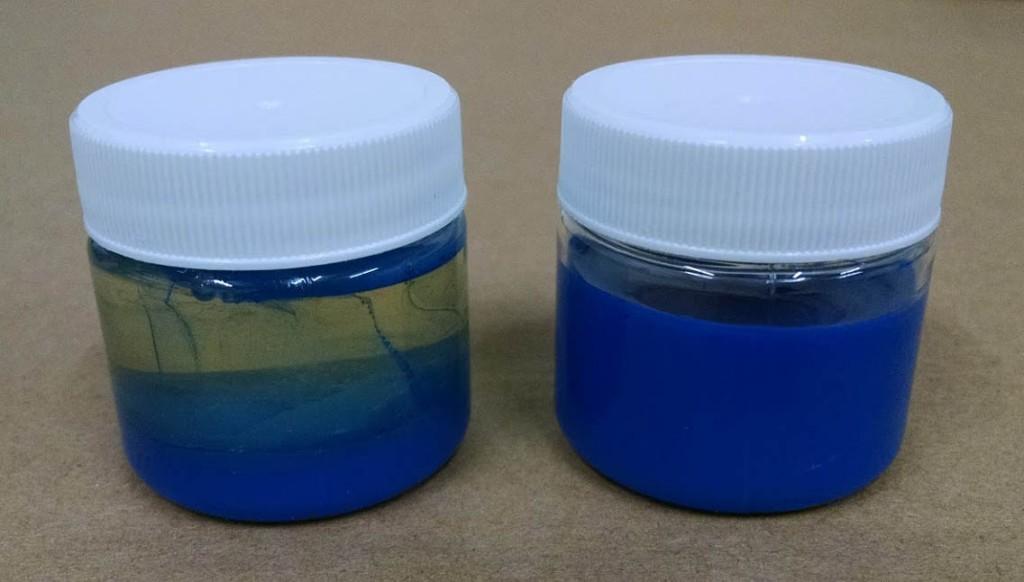 One of the major perks about the maker community and buying materials and products within its vast worldwide and online marketplace is that most supply businesses were founded by individuals who are dedicated makers themselves. They are motivated for quality in materials as they too travel along in the constant journey of 3D printing innovation, seeking the perfect 3D model.
One of the major perks about the maker community and buying materials and products within its vast worldwide and online marketplace is that most supply businesses were founded by individuals who are dedicated makers themselves. They are motivated for quality in materials as they too travel along in the constant journey of 3D printing innovation, seeking the perfect 3D model.
With one of the number one rules in business being to know your customer, for a company like MakerJuice, that’s a given, with their passion for and dedication to 3D printing, backed by a team foundation of expertise in both engineering and chemistry. The MakerJuice team has also had great foresight in seeing the value of 3D printing for the future, and with that in mind their goal has always been to provide affordable accessibility of resins for hobbyists and 3D printing operators on all levels.
 As they roll out the newest formula modifications to their UV resins, MakerJuice is working to respond to feedback and the very specific needs of the 3D printing community. Using resin while 3D printing can offer a host of issues, although it’s extremely popular. The resin material–which is basically a liquid plastic–is cured with light, and in this context, UV light. The results can be very rewarding as you can print models all in one piece rather than multiple pieces, while also avoiding ridges. This comes in very handy for large batches, not just limiting you to 3D printed one-off prototypes.
As they roll out the newest formula modifications to their UV resins, MakerJuice is working to respond to feedback and the very specific needs of the 3D printing community. Using resin while 3D printing can offer a host of issues, although it’s extremely popular. The resin material–which is basically a liquid plastic–is cured with light, and in this context, UV light. The results can be very rewarding as you can print models all in one piece rather than multiple pieces, while also avoiding ridges. This comes in very handy for large batches, not just limiting you to 3D printed one-off prototypes.
In such a new industry where products and materials and new innovations spring up by the day, it would seem, materials are undergoing constant refinement. Founded in 2013 and headquartered in Kansas, MakerJuice is continuing in their dedication to providing superior resins, and now they are answering a common problem that’s been plaguing customers for quite some time regarding pigment separation. Again, everything has an up and down side for the most part and that’s certainly not excepted during the challenges of 3D printing and choosing materials. While low viscosity can be a positive, the negative aspects needed to be eliminated.
“One of the most common comments we’ve heard from our customer base over the past two years is that pigment separation has caused issues during long prints and when leaving our materials in the printer for long periods,” states the MakerJuice team. “This is a result of the low viscosity of MJL resins when compared to the very thick resins of other manufacturers. While this low viscosity has a lot of advantages like easier cleaning and less strain on 3D printers, the pigment separation has been a negative side effect.”
The MakerJuice team has worked for some time now to modify all of their UV resins so that users have better outcomes with their 3D prints due to less settling without increased viscosity. The key was in altering the chemistry so that during storage conditions, anti-settling qualities are improved. MakerJuice was able to make this happen by altering the resin with an internal 3D network structure that perpetually keeps the pigment suspended.
“The slow network formation and the resulting thixotropic flow behavior also reduces the formation of air in the resin during agitation, providing another added benefit,” states the MakerJuice team.
Now, the satisfying end result is that the MakerJuice UV resins will ‘flow beautifully’ while you are using them, despite storage conditions or length. Currently, all orders being shipped for the resin do contain the new modifications.
Have you experienced viscosity issues with resin while 3D printing? Discuss your thoughts on the new modifications MakerJuice has made to their resins in the MakerJuice 3D Printing UV Resins forum thread over at 3DPB.com.
Subscribe to Our Email Newsletter
Stay up-to-date on all the latest news from the 3D printing industry and receive information and offers from third party vendors.
You May Also Like
3D Printing News Briefs, April 13, 2024: Robotics, Orthotics, & Hypersonics
In 3D Printing News Briefs today, we’re focusing first on robotics, as Carnegie Mellon University’s new Robotics Innovation Center will house several community outreach programs, and Ugogo3D is now working...
Rail Giant Alstom Saves $15M with 3D Printing Automation Software 3D Spark
3D Spark has entered into a three-year deal with the rail giant Alstom. Alstom, a transport behemoth with annual revenues of $16 billion, specializes in the manufacture of trains, trams,...
Meltio Expands Global Reach with New Partnerships in the Americas and Europe
Spanish 3D printing manufacturer Meltio has expanded its sales network across the globe. With the addition of three new partners in the United States, Brazil, Argentina, and Italy, Meltio aims...
3D Printing Webinar and Event Roundup: April 7, 2024
Webinars and events in the 3D printing industry are picking back up this week! Sea-Air-Space is coming to Maryland, and SAE International is sponsoring a 3D Systems webinar about 3D...
































